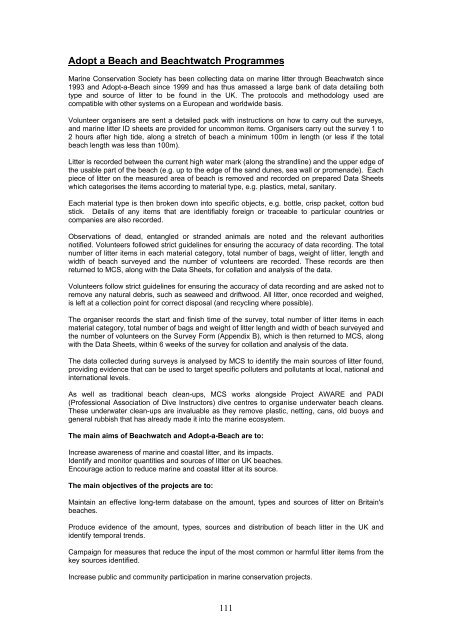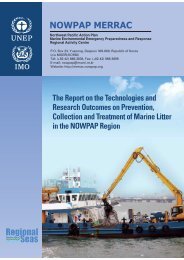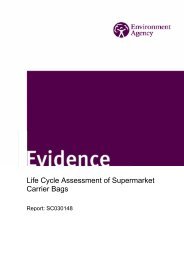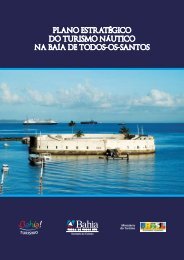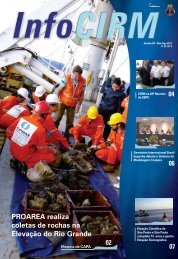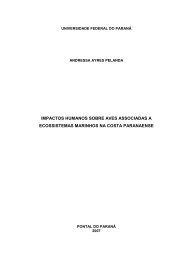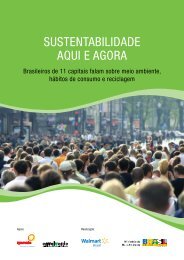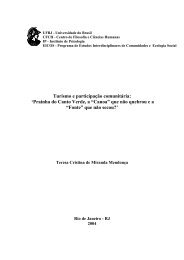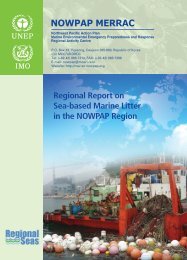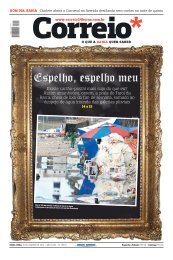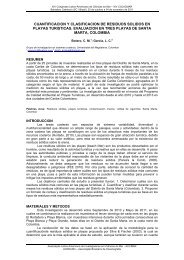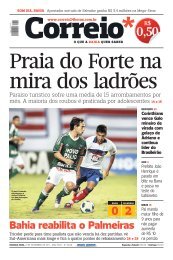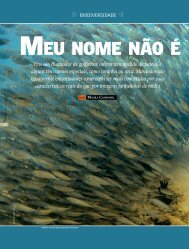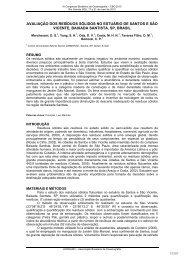view pdf - Seas At Risk
view pdf - Seas At Risk
view pdf - Seas At Risk
- No tags were found...
You also want an ePaper? Increase the reach of your titles
YUMPU automatically turns print PDFs into web optimized ePapers that Google loves.
Adopt a Beach and Beachtwatch ProgrammesMarine Conservation Society has been collecting data on marine litter through Beachwatch since1993 and Adopt-a-Beach since 1999 and has thus amassed a large bank of data detailing bothtype and source of litter to be found in the UK. The protocols and methodology used arecompatible with other systems on a European and worldwide basis.Volunteer organisers are sent a detailed pack with instructions on how to carry out the surveys,and marine litter ID sheets are provided for uncommon items. Organisers carry out the survey 1 to2 hours after high tide, along a stretch of beach a minimum 100m in length (or less if the totalbeach length was less than 100m).Litter is recorded between the current high water mark (along the strandline) and the upper edge ofthe usable part of the beach (e.g. up to the edge of the sand dunes, sea wall or promenade). Eachpiece of litter on the measured area of beach is removed and recorded on prepared Data Sheetswhich categorises the items according to material type, e.g. plastics, metal, sanitary.Each material type is then broken down into specific objects, e.g. bottle, crisp packet, cotton budstick. Details of any items that are identifiably foreign or traceable to particular countries orcompanies are also recorded.Observations of dead, entangled or stranded animals are noted and the relevant authoritiesnotified. Volunteers followed strict guidelines for ensuring the accuracy of data recording. The totalnumber of litter items in each material category, total number of bags, weight of litter, length andwidth of beach surveyed and the number of volunteers are recorded. These records are thenreturned to MCS, along with the Data Sheets, for collation and analysis of the data.Volunteers follow strict guidelines for ensuring the accuracy of data recording and are asked not toremove any natural debris, such as seaweed and driftwood. All litter, once recorded and weighed,is left at a collection point for correct disposal (and recycling where possible).The organiser records the start and finish time of the survey, total number of litter items in eachmaterial category, total number of bags and weight of litter length and width of beach surveyed andthe number of volunteers on the Survey Form (Appendix B), which is then returned to MCS, alongwith the Data Sheets, within 6 weeks of the survey for collation and analysis of the data.The data collected during surveys is analysed by MCS to identify the main sources of litter found,providing evidence that can be used to target specific polluters and pollutants at local, national andinternational levels.As well as traditional beach clean-ups, MCS works alongside Project AWARE and PADI(Professional Association of Dive Instructors) dive centres to organise underwater beach cleans.These underwater clean-ups are invaluable as they remove plastic, netting, cans, old buoys andgeneral rubbish that has already made it into the marine ecosystem.The main aims of Beachwatch and Adopt-a-Beach are to:Increase awareness of marine and coastal litter, and its impacts.Identify and monitor quantities and sources of litter on UK beaches.Encourage action to reduce marine and coastal litter at its source.The main objectives of the projects are to:Maintain an effective long-term database on the amount, types and sources of litter on Britain'sbeaches.Produce evidence of the amount, types, sources and distribution of beach litter in the UK andidentify temporal trends.Campaign for measures that reduce the input of the most common or harmful litter items from thekey sources identified.Increase public and community participation in marine conservation projects.111


